
Looking to create a peaceful retreat at home? Discover the best relaxing bedroom colors that soothe your mind and help you unwind. These calming hues will transform your space into the ultimate sanctuary.
Why Relaxing Bedroom Colors Matter
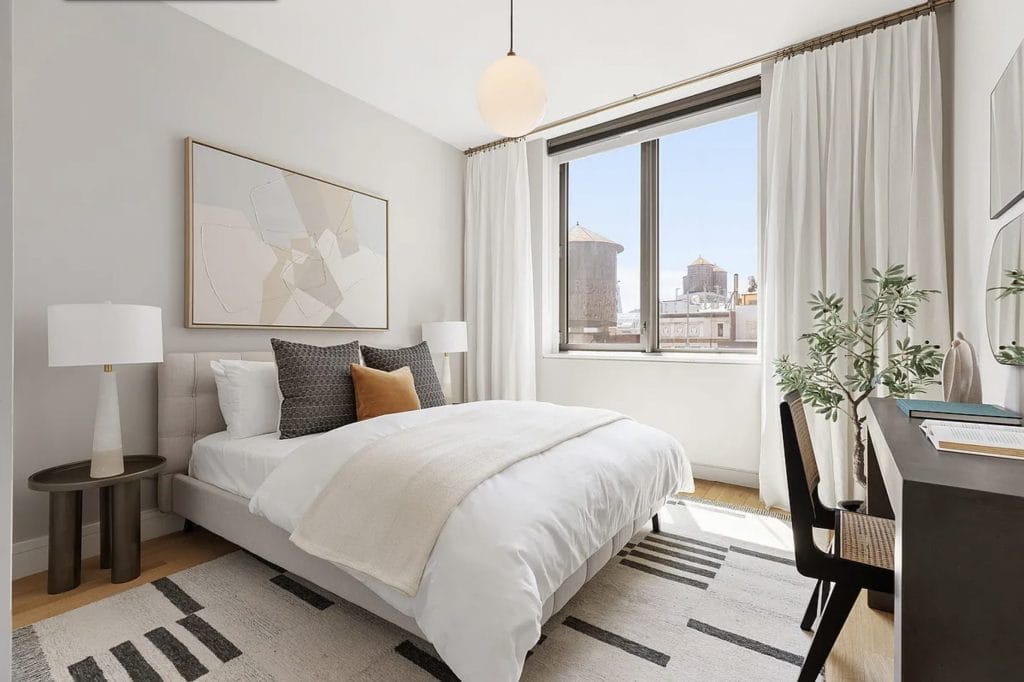
Color moves through the body before it moves through thought. Blue can slow breathing, just as red can trigger alertness. Vivid yellow, even in small amounts, speeds the pulse. In short: if you use high-energy colors in your bedroom interior design, you’re wiring the space to resist sleep.
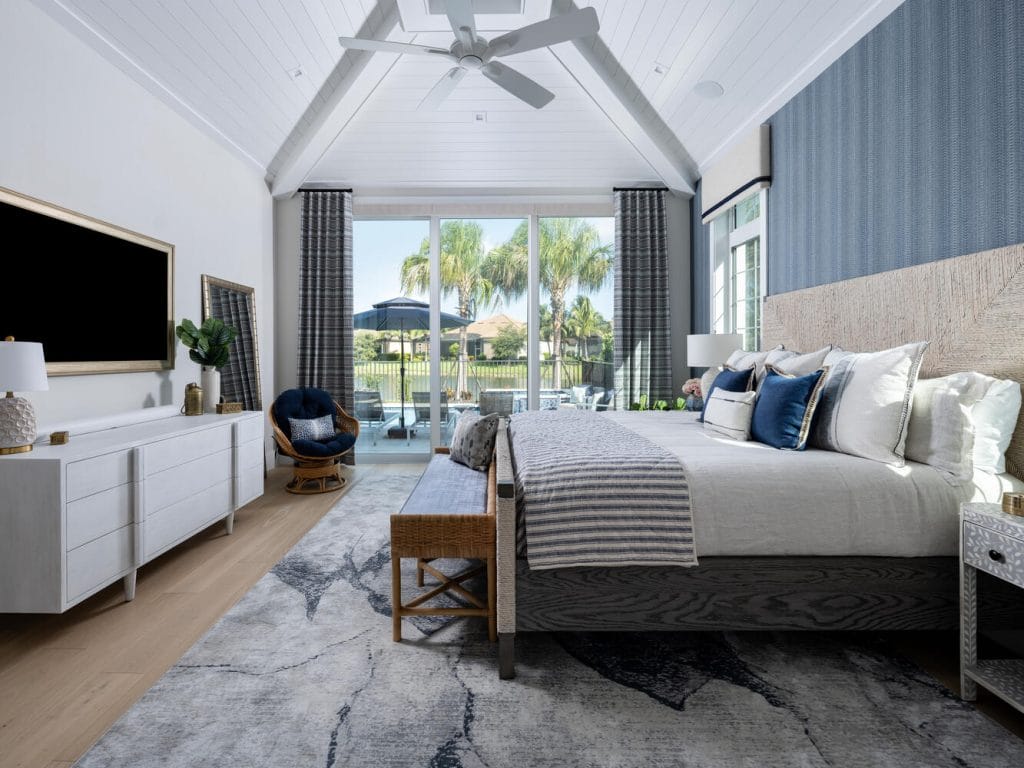
But it’s not only about color psychology. Rooms shift by hour, and artificial light distorts pigment. Cool tones flatten in low light, while LEDs can turn blues into violets. That’s why testing a swatch in morning light just doesn’t tell you enough. For genuinely relaxing bedroom colors, check the hues in the evening and how they behave under both overhead light and bedside lamp illumination.
Pro Tip: Relaxing bedroom colors can be used in a variety of decor styles. Not sure what yours is? Try our Free Interior Design Style Quiz to discover your ideal style today!
Best Relaxing Bedroom Colors
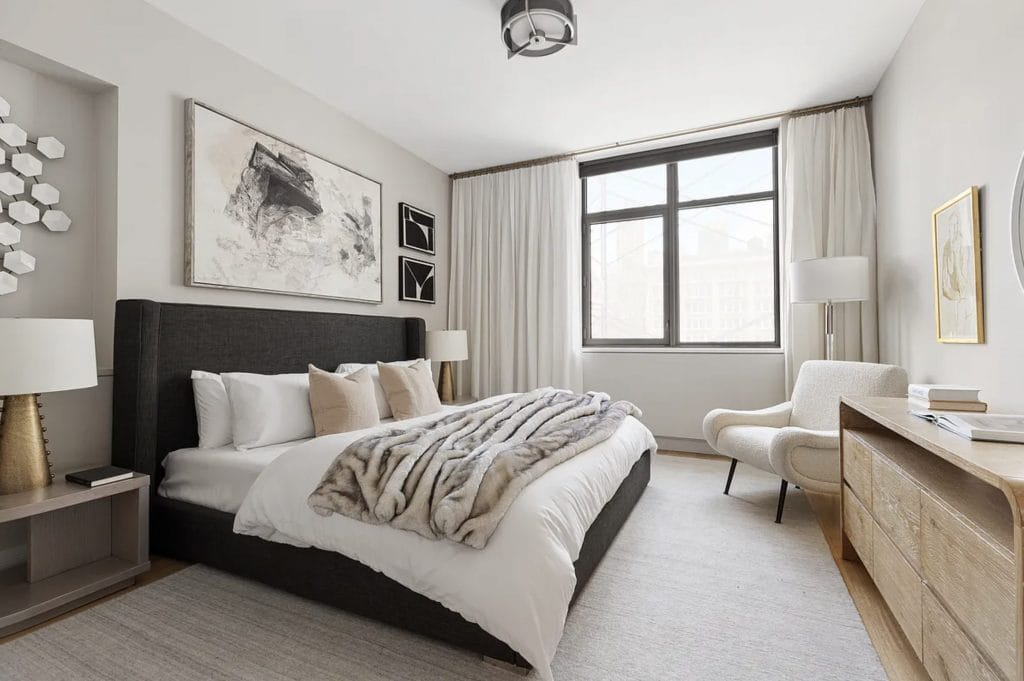
Genuinely soothing bedroom colors don’t relax you just by being soft. These shades also stay stable under warm light, reduce visual contrast, and slow down the room. Each one works differently, depending on what else is in the space.
1. Blue That Holds in Low Light
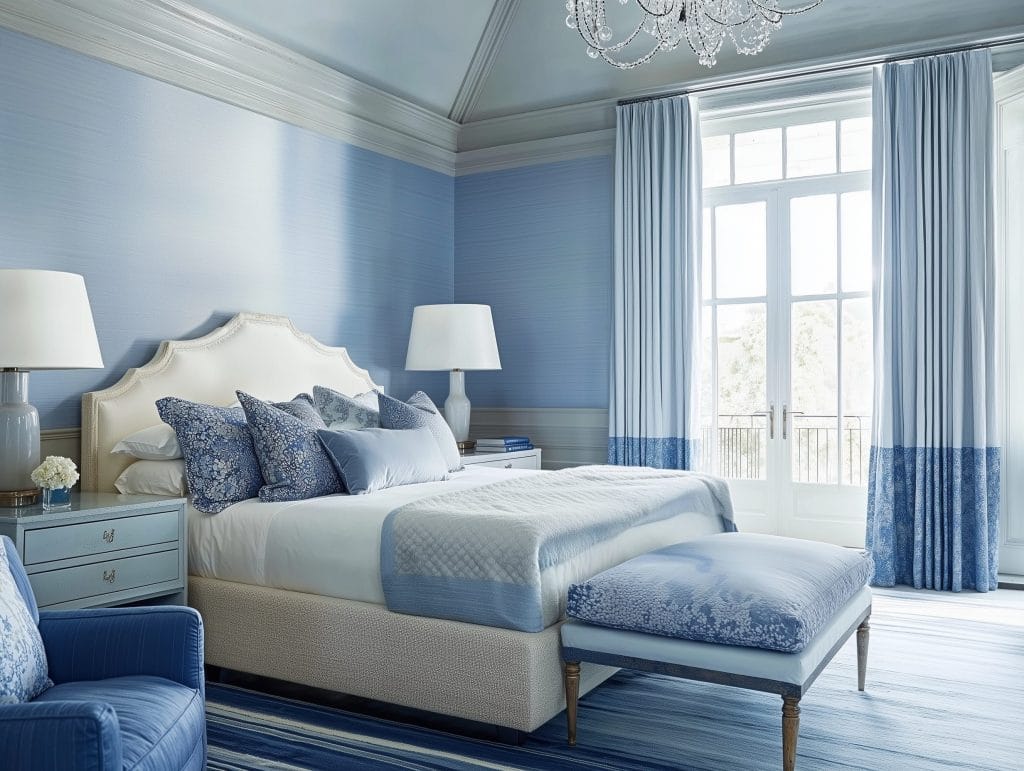
Choose a blue with enough gray undertone to stop it from turning purple or electric under warm bulbs. It should look slightly muted even in daylight. Combine it with off-white walls or bedding that contains a beige or cream tint. Also, avoid any surface in the room that reflects a lot of light. This is one of those relaxing bedroom colors that look best surrounded by texture, because smooth surfaces will reflect too much and make the wall color feel colder than it is.
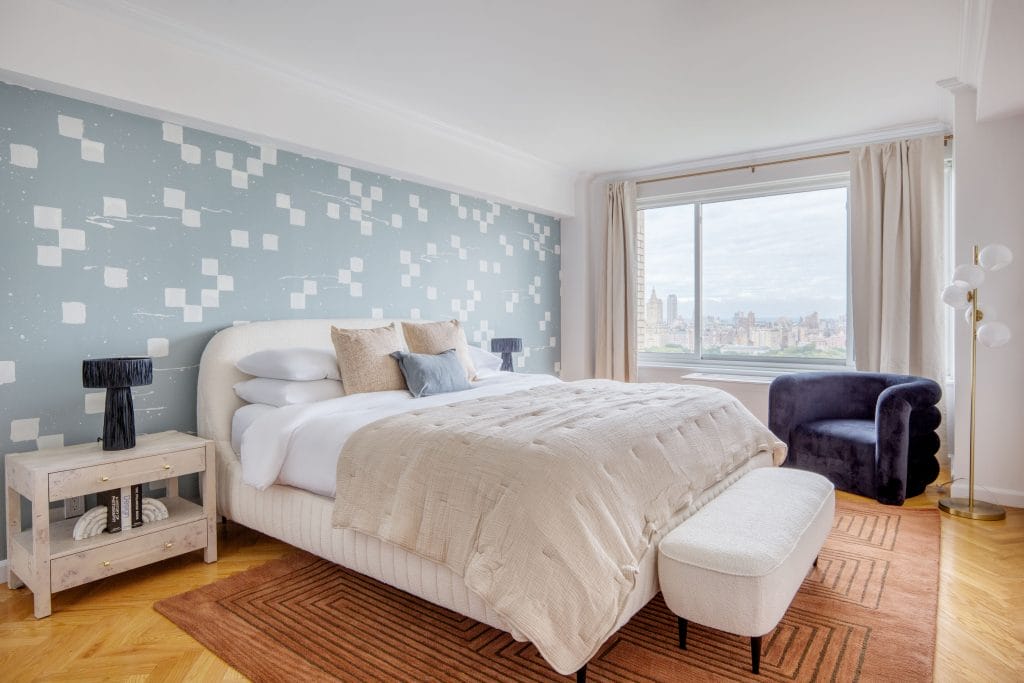
Pro Tip: If the room has LED lighting, switch to 2700K bulbs before you choose the paint. Anything cooler will make the blue shift and undo the effect.
2. Faded Sage That Softens the Room’s Edges
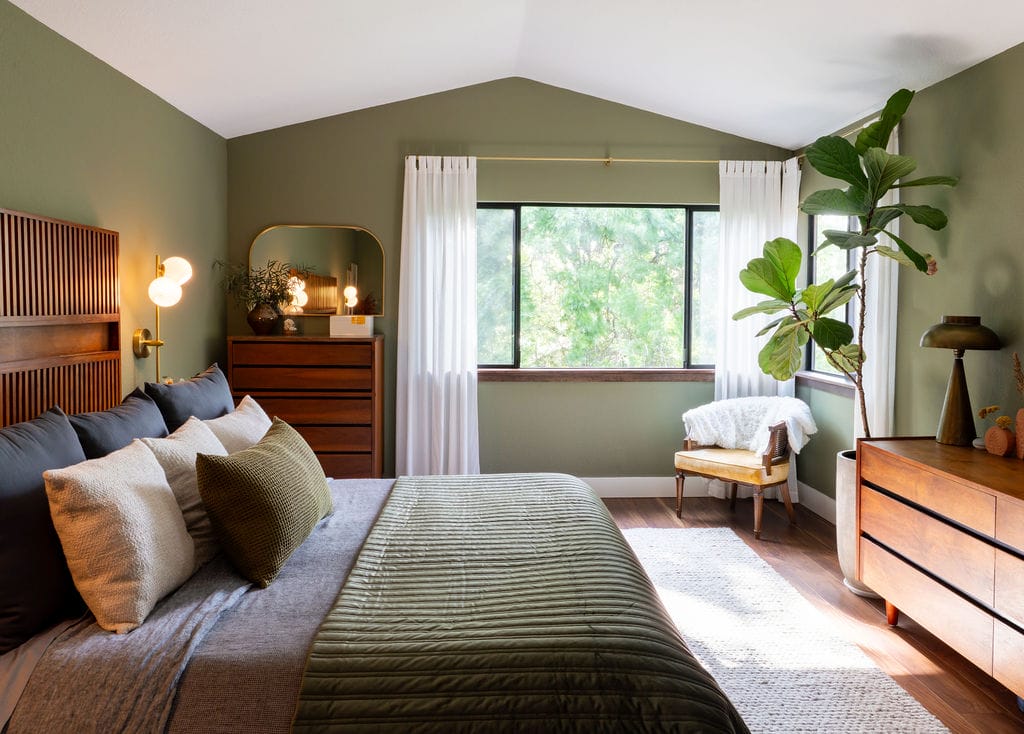
Similarly to the blues, sage toned down with gray will not shift green under artificial light. The right hue should remind you of the eucalyptus that’s been left to dry—matte, muted, and slightly desaturated. In a small bedroom, this color fades into the background, making the walls feel farther away. Grey sage works especially well in rooms that feel visually cluttered—it reduces the number of surfaces your eye lands on, which helps slow down visual processing.
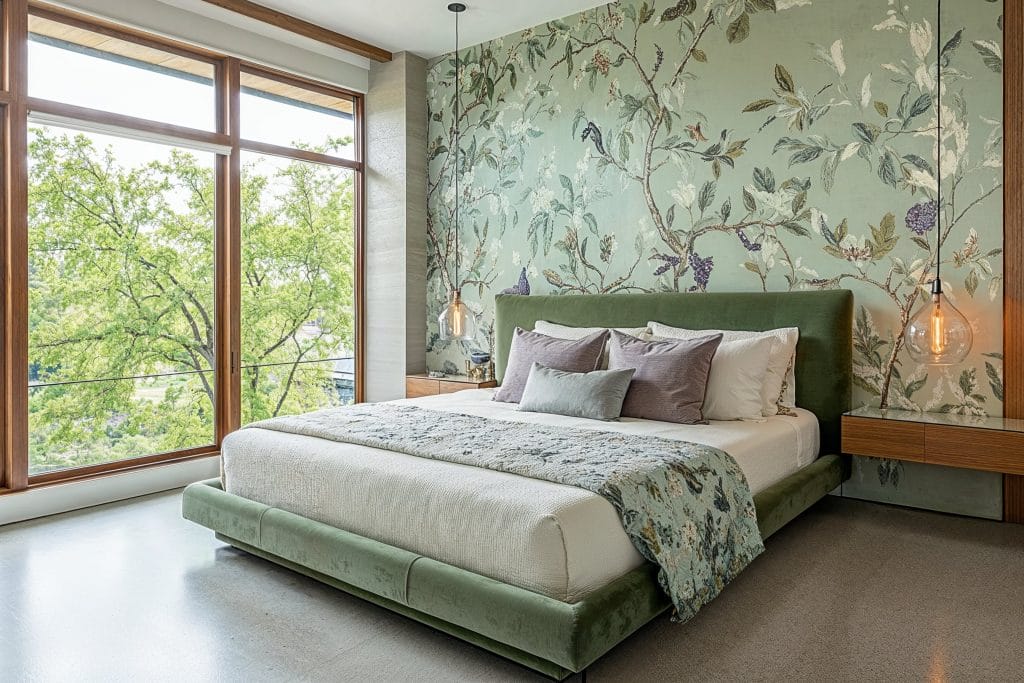
Pro Tip: In windowless rooms or rooms with cool LED lights, this color holds better than beige and feels closer to nature.
3. Browns That Absorb Reflection
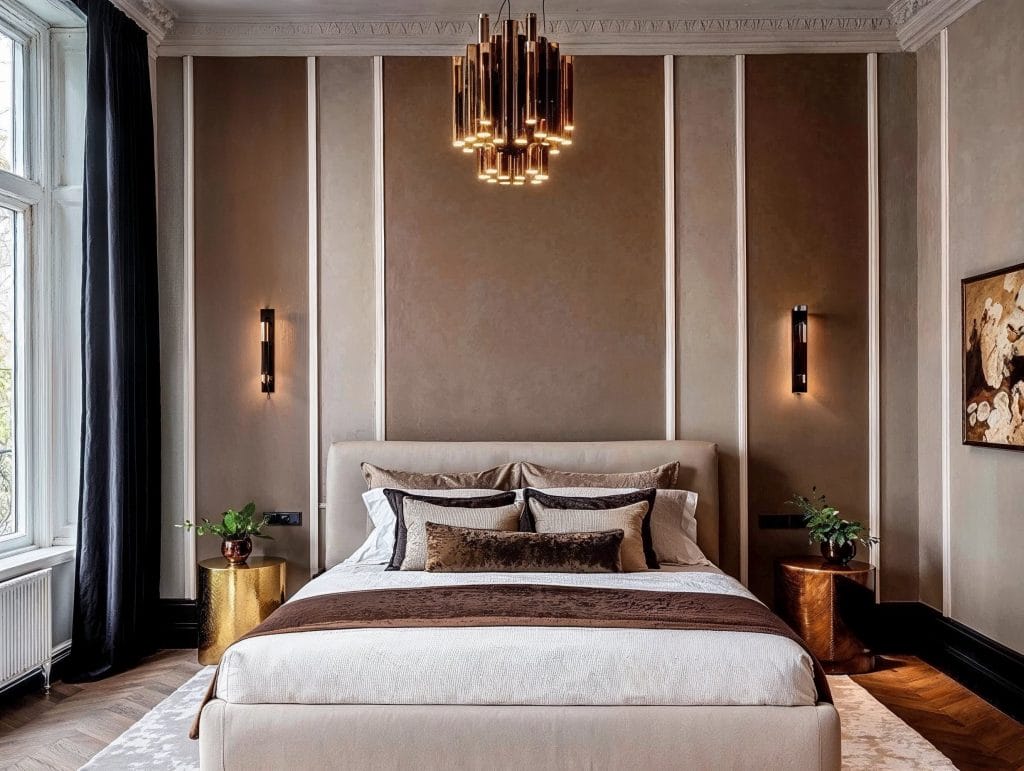
Use a brown that reads like untreated leather or worn bark—mid-range, soft-edged, and without heavy red or yellow undertones. This version reflects a small amount of light, just enough to stop the walls from closing in. In bedrooms with north or east light, it stays stable and low-contrast. Under warm lamps, it gains depth without pulling orange. Pair it with warm neutrals, and keep in mind that relaxing bedroom colors of this type hold best when layered with other matte surfaces.
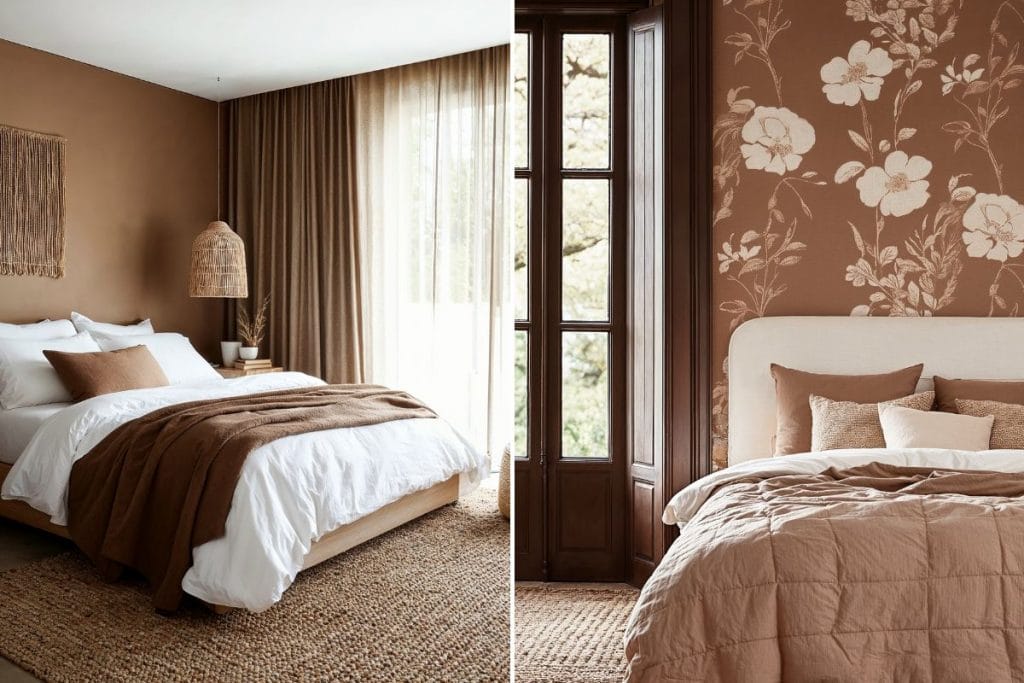
Pro Tip: This is one of the most forgiving calming bedroom colors for rooms with multiple wood tones.
4. Powder Rose for a Low-Warmth Interior
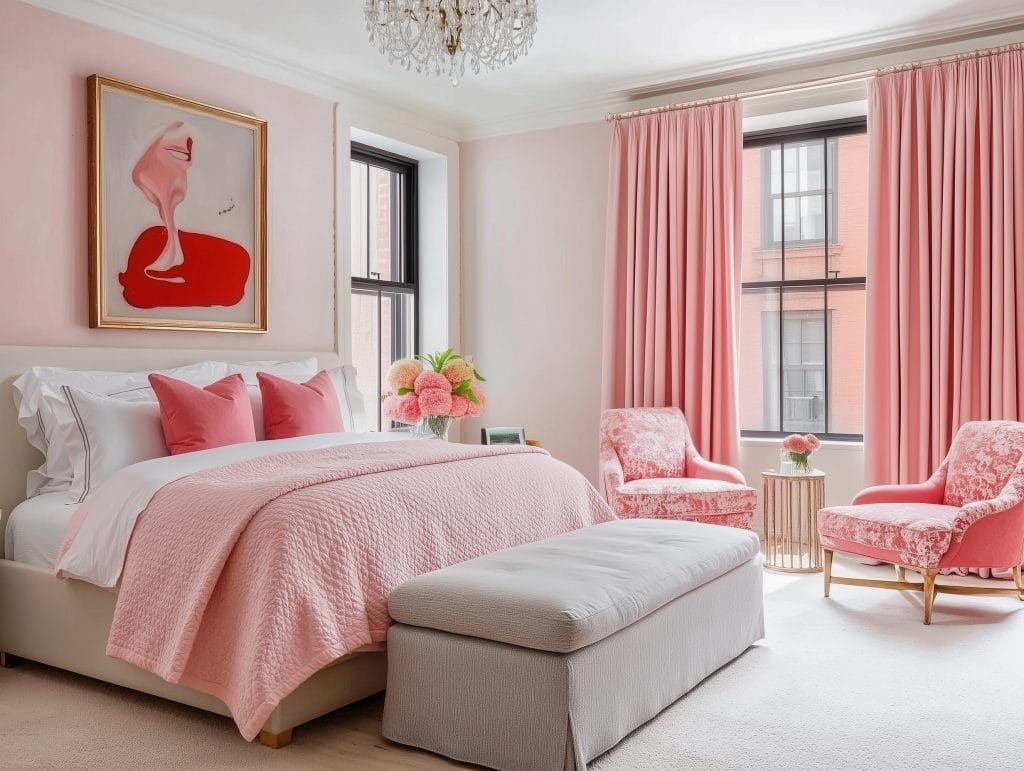
Look for a rose color that contains visible beige pigment. It should read closer to powder or clay than to candy. This version sits quietly in the background, especially under soft light where it won’t shift or sharpen. Pair it with ivory or sand and accent with warm grays. Avoid vivid colors, glass, chrome, or anything with sparkle. If you want contrast, use rust or deep navy—something matte and heavy.
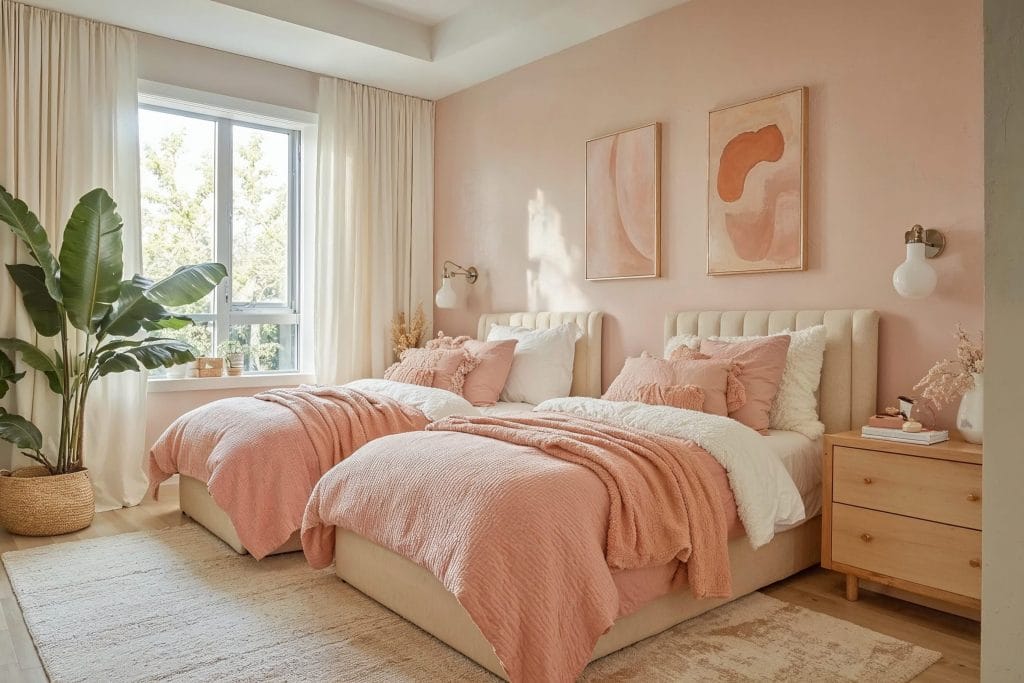
Pro Tip: This is one of the most effective calming bedroom colors when paired with heavy textiles. A quilted bedspread or a thick cotton curtain will deepen the tone and slow the room down.
5. Muted Mauve for Evening Light
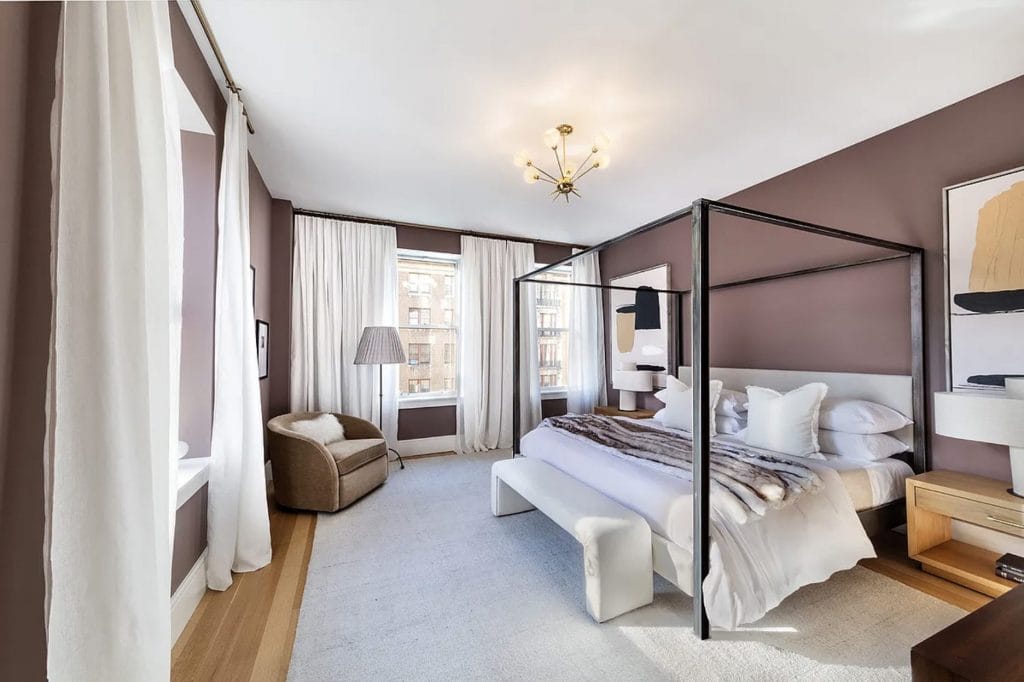
Choose a mauve softened with pink or beige pigment; alternatively, also low in saturation. It holds its tone in both natural and artificial light, which makes it ideal for bedrooms with western exposure. Under warm light, it should deepen slightly. Use lighting with fabric shades to avoid shine. Moreover, stick to taupes, tobacco tones, or even soft yellow accents if contrast is needed.
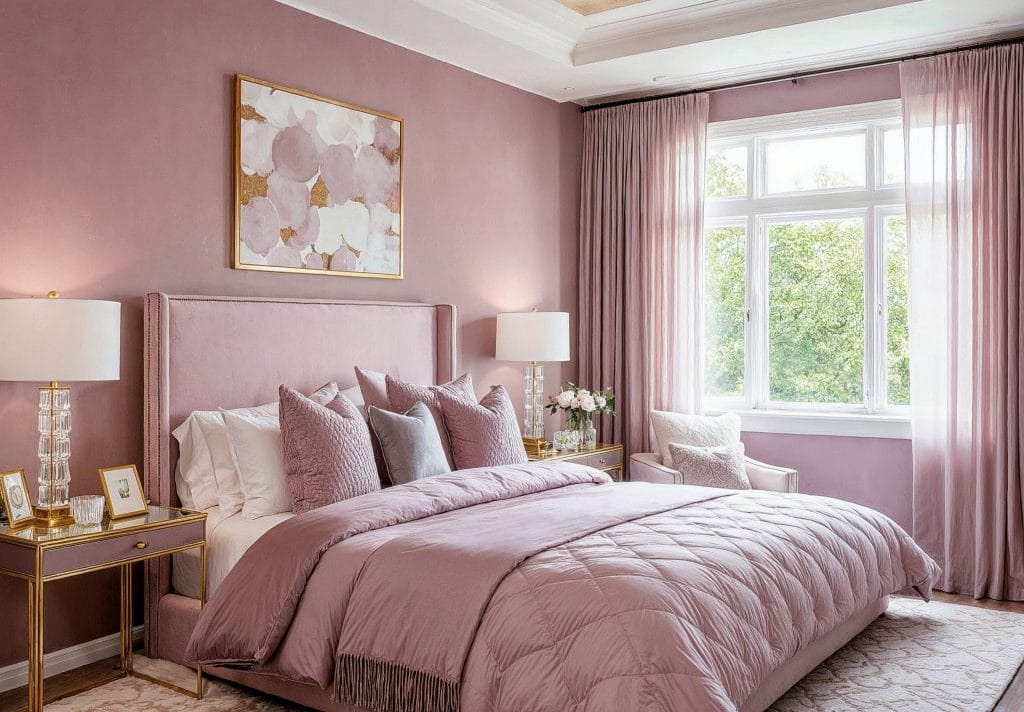
Pro Tip: Mauve might reflect too much red on light-colored floors. If your flooring is pale, use a deeper version of the paint to hold the balance.
6. Stone-Gray That Flattens Visual Breaks
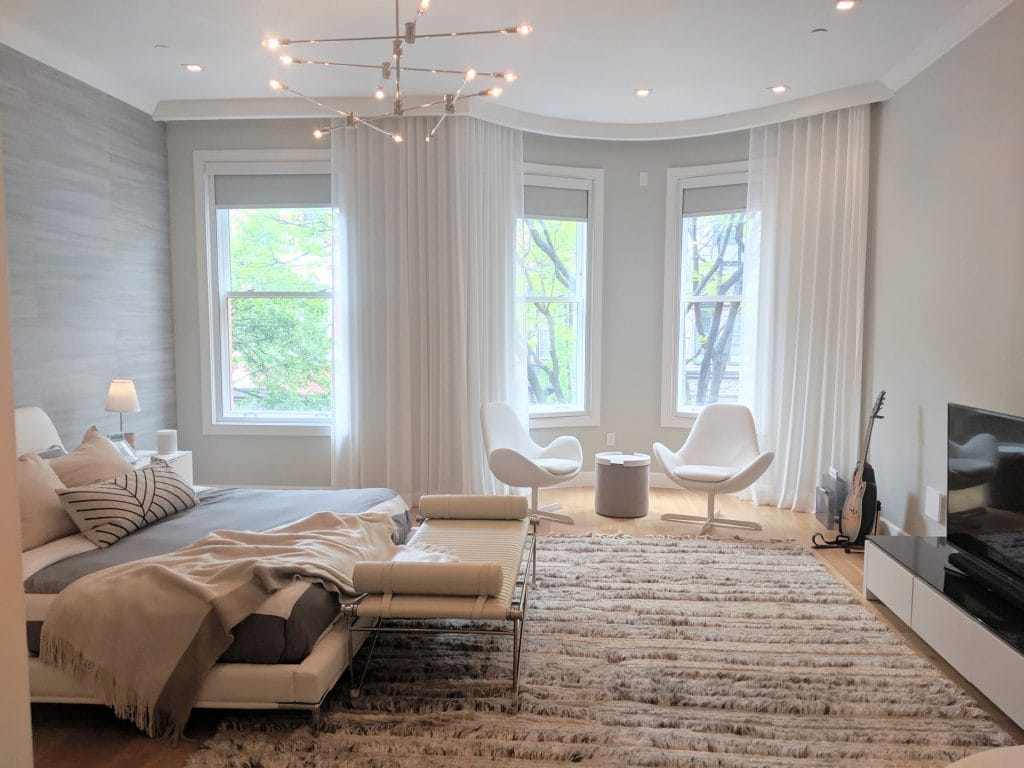
Relaxing room colors that lean gray but still hold some warmth should look like stone—not beige, not greige, but something in between. This is one of the most forgiving choices for bedrooms containing mixed materials because it doesn’t compete with other tones. Consider painting walls, trim, and even the ceiling the same color to erase breaks in the space. Add structure through furniture, and let surfaces carry the variation.
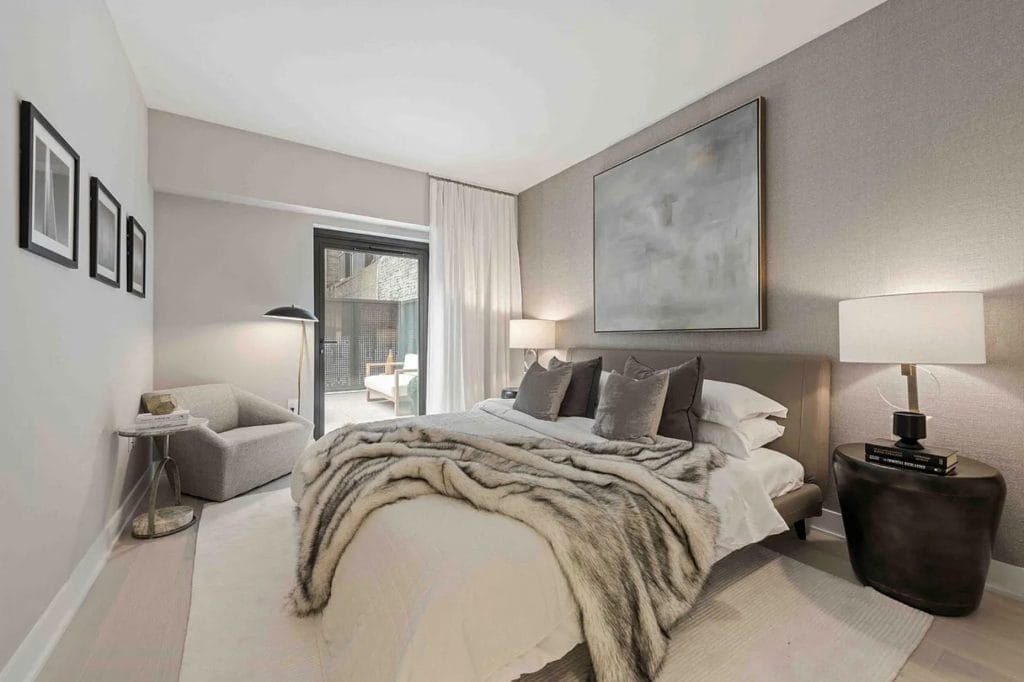
Pro Tip: Use layered lighting and a dimmable ceiling fixture.
7. Light-Reflecting Soft Creams
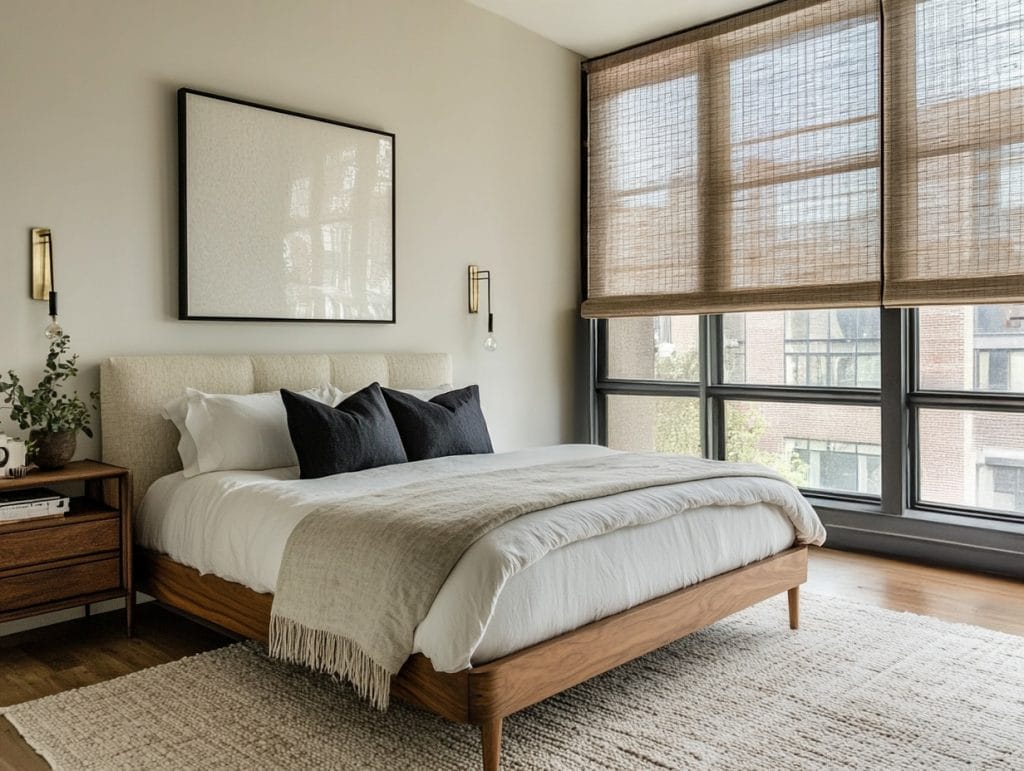
Choose a cream that leans into beige. It should feel closer to raw wool than vanilla, so it stays soft without turning golden under warm light. This is one of the best relaxing bedroom colors when the space needs quiet but still has to reflect some light, like small rooms with low ceilings or apartments with minimal sun. Pair with wood that has visible grain, light linen, ceramic with matte glaze. Avoid bright trims, as they will make the cream look dirty by contrast.
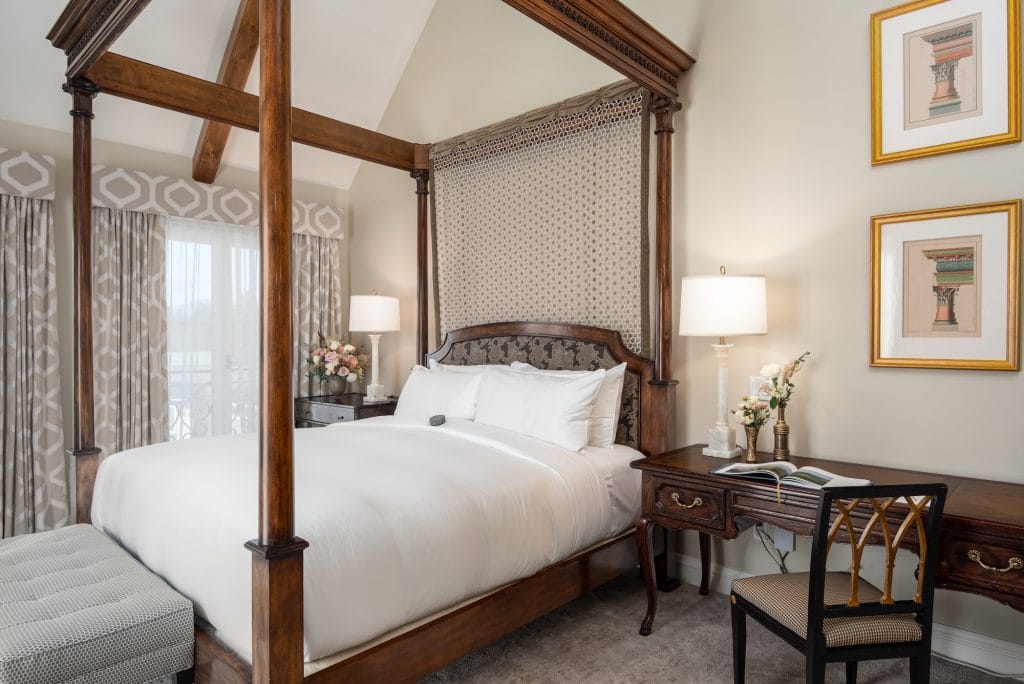
Pro Tip: Paint the ceiling the same color or one shade lighter to smooth the transition.
8. Taupe for Organic Sophistication
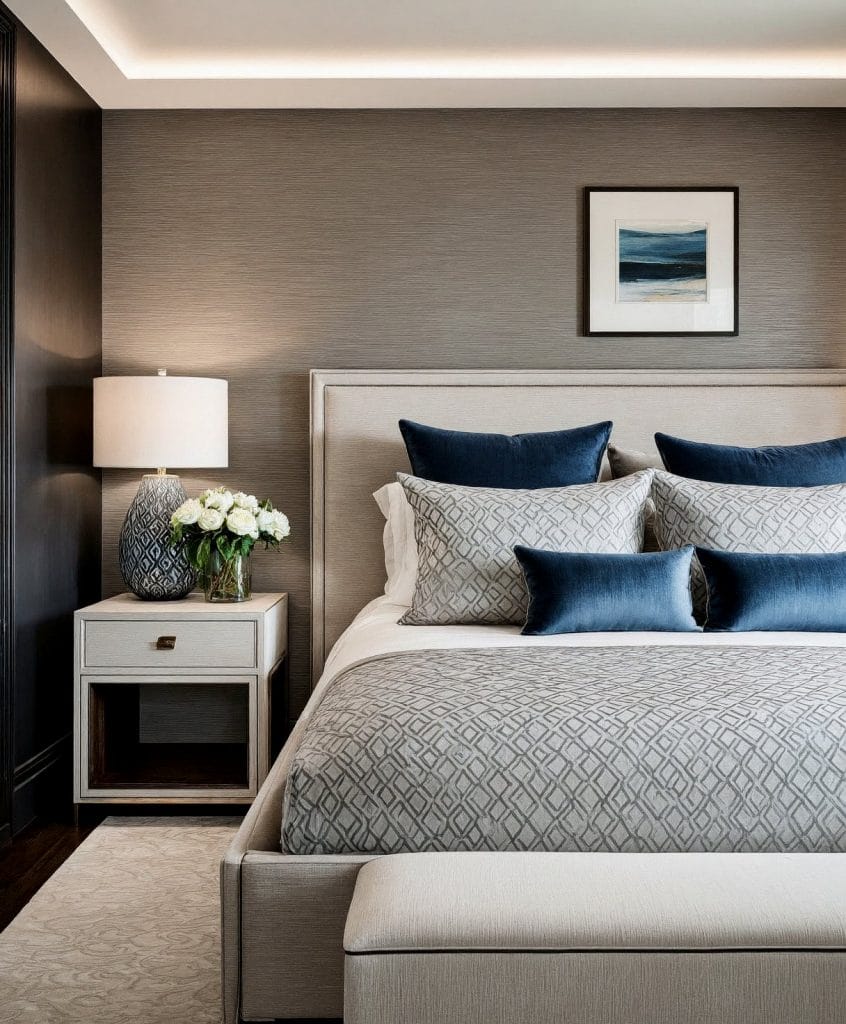
Choose a taupe that holds some brown or red so it doesn’t drift gray under the lamp light. In bedrooms with minimal sunlight, it keeps the walls from going dull. Combine it with other muted tones, but avoid bright whites. Use natural fibers with a slightly rough weave, and let the furniture sit low and flat against the color so nothing floats.
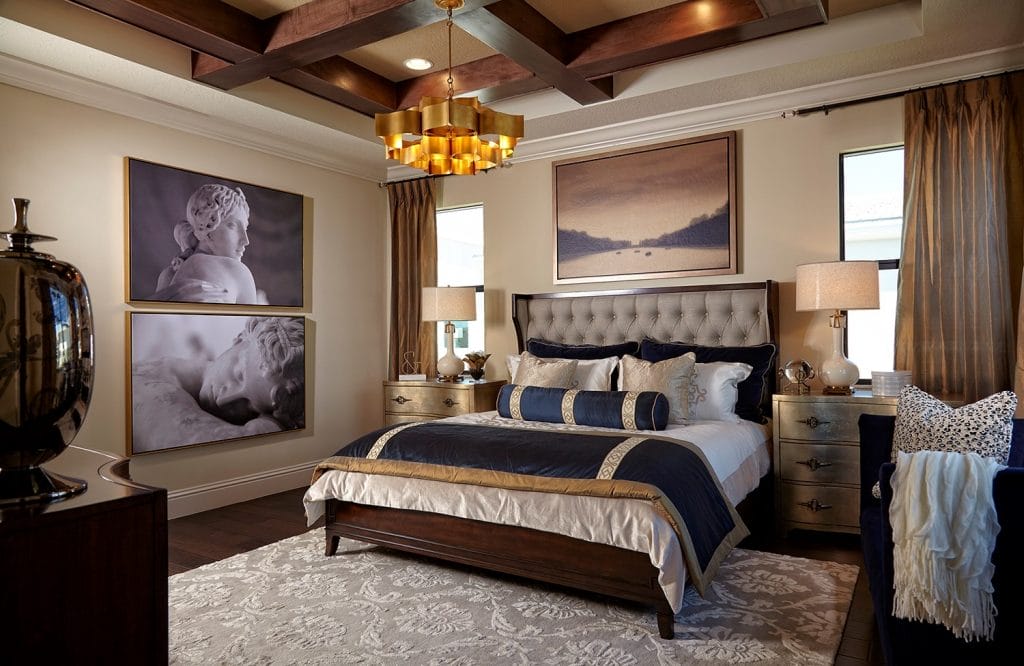
Pro Tip: Test this color next to every major surface in the room. Taupe shifts based on what surrounds it, and the right version will sit between them without matching anything exactly.
Need help incorporating relaxing bedroom colors into your space?
A professional bedroom designer can help you create the ultimate retreat for unwinding and getting a good nights sleep. Book your Free Online Interior Design Consultation to get started today!









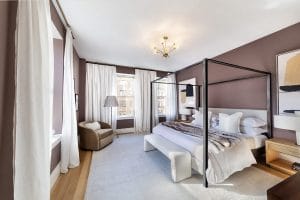
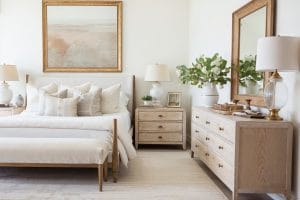
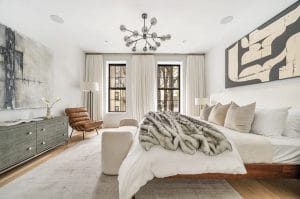
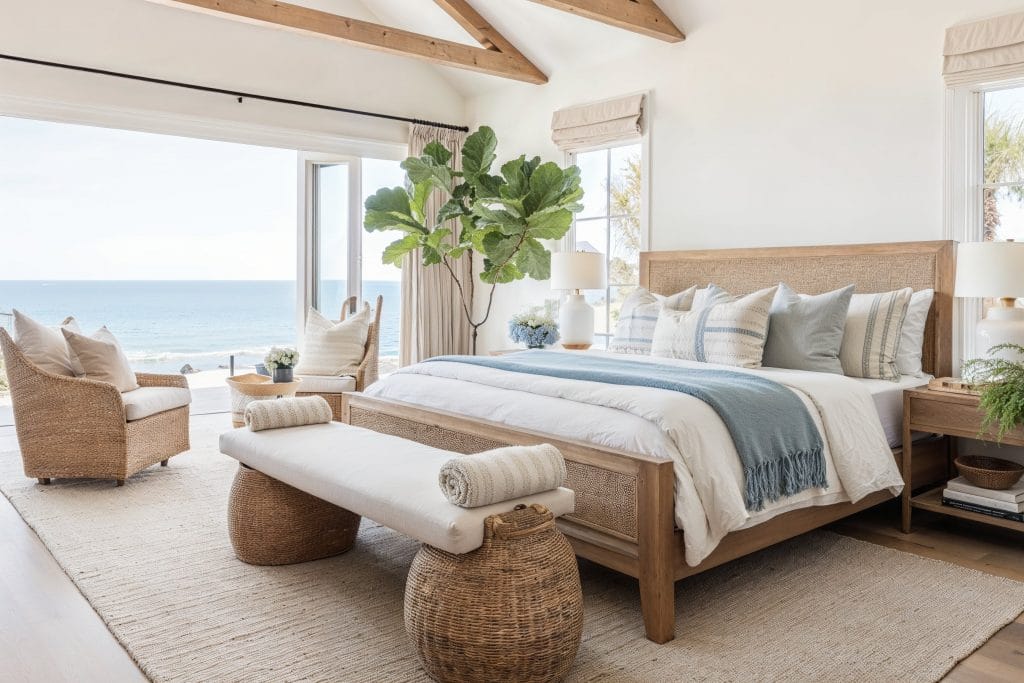
Comments